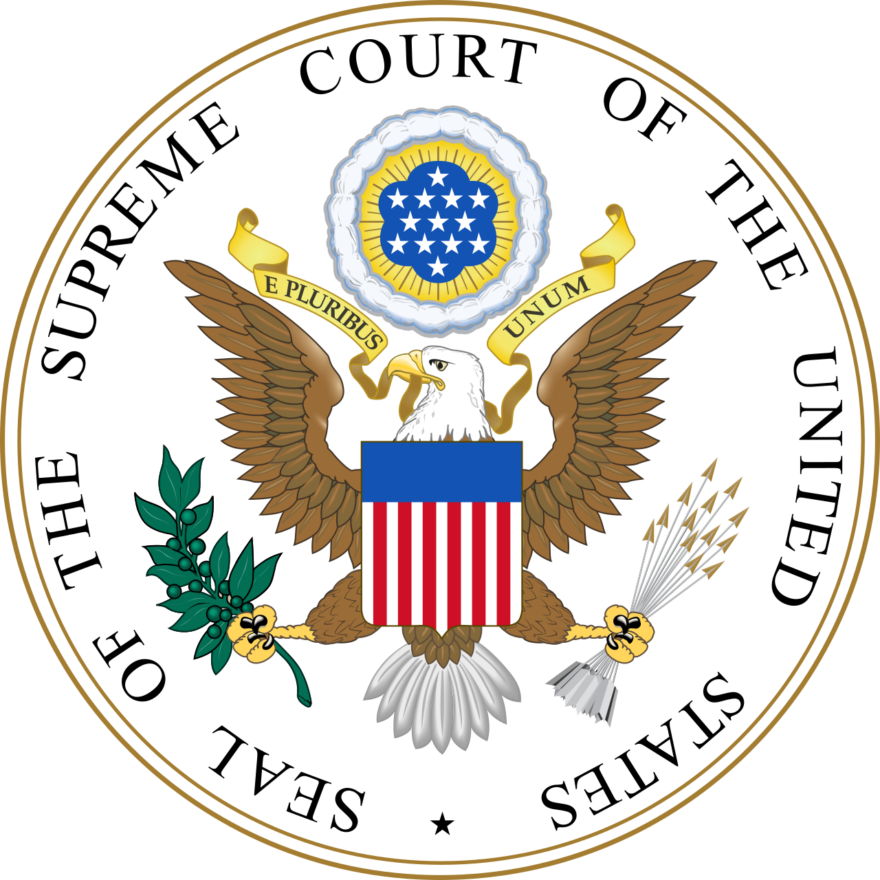- Blog
- > College Admissions
Impact of Harvard Lawsuit on Affirmative Action in College Admissions
- Dr. Rachel Rubin
- | May 10, 2023

As of May 2023, there are major legal cases in front of the U.S. Supreme Court right now dealing with the role of affirmative action in college admissions, brought by the group Students for Fair Admissions against Harvard University and other well-known universities.
Of course, we can’t predict the future; like everyone else, we can only speculate as to how the Fair Admissions case will be decided, and what consequences might ensue. But given how influential these rulings may be on the future of college admissions, we thought it might be beneficial to offer a survey of past cases on this subject, to contextualize the Fair Admissions cases and explain what we think some possible outcomes of the case might be.
What Is Affirmative Action?
Although the term comes up most often these days in the context of college admissions in the United States, affirmative action has been around since the 1960s and has affected a wide range of laws and policies. Indeed, in its origins, it was most closely linked to employment, rather than education. The first use of the term in American law actually occurred during the New Deal; the National Labor Relations Act of 1935 legislated that an employee who faced discrimination at work in treatment or pay because of his ties to, or support for, unionization efforts would be restored to his original job through “affirmative action.” The term has evolved since then, but this first use established a core idea of righting a discriminatory wrong.
What we now think of as “affirmative action” for demographic minorities, particularly racial minorities, emerged most clearly through President Lyndon Johnson’s Great Society programs in the 1960s. While building on the racial equity programs and policies of its predecessors, Great Society legislation sought to actively correct for centuries of racial discrimination and social exclusion through “affirmative action”—taking active steps to support, recruit, and advocate for women and racial minorities in the United States, whether by rewarding employers who hired women and minorities or requiring affirmative action from government agencies.
Despite this initial focus on employment, affirmative action became most commonly associated with education, and particularly higher education, during the 1970s. Although public schools had been legally desegregated by court order in the 1950s, so-called ‘de facto’ segregation remained, the result of racially discriminatory housing and urban development policies going back decades, even centuries. This inequality in schools was reproduced in colleges, and then even more visibly in graduate schools, particularly law and medical schools, where minority applicants came to the admissions process at a serious disadvantage in joining these professions.
For this reason, some graduate schools in the 1970s system instituted affirmative action systems that would prioritize minority applicants in the admissions process, even if their numerical scores or other marks were lower than that of certain white applicants. A number of lawsuits ensued, but the one that reached the Supreme Court was that of Allan Bakke, who had applied to the University of California Davis Medical School in 1973 and was rejected, despite having earned a higher “rating” in the admissions process than some minority applicants who were admitted. That lawsuit led to the first major Supreme Court case on affirmative action in higher education admissions.
Regents of the University of California v. Bakke (1978)
Although every major legal case has its own specifics, the major takeaways from the Supreme Court’s decision in Bakke were twofold. Most importantly, like many cases that would follow, it upheld the general policy of affirmative action while eroding the specifics.
At stake in Bakke was, on one side, the University of California’s claim that their admissions policies were absolutely necessary to ensure that marginalized populations could move into high-paying and well-respected professions like medicine, and on the other, Bakke’s lawyers’ claims that these policies violated their client’s right to equal protection under the law guaranteed by the Fourteenth Amendment. The case also served as the stand-in for a variety of similar cases, including a preceding one at the University of Washington law school.
Ultimately, the court was divided about the many complex factors of the case, but the upshot of their decision supported the University of California’s minority admissions program while curtailing its reach. Although the court upheld the validity of affirmative action broadly, they also decreed that the University of California’s quota system for admitting racial minorities was unconstitutional, on the grounds that it was not reasonable that they could absolutely find a pre-determined number of qualified applicants from every protected racial group.
In the end, Allan Bakke attended the University of California Davis Medical School, and affirmative action survived, but in a more limited format. The case also made clear to observers that the issue was far from settled. However, although cases continued to be brought, the next major challenge to affirmative action before the Supreme Court did not come until almost forty years later, this time pertaining to undergraduate admissions.
Fisher v. University of Texas (2016)
In 2008, Texas high school student Abigail Fisher applied to the University of Texas at Austin, the flagship campus of the public university system, and was denied admission. At the time, the University of Texas system admitted the top 10% of every high school graduating class, regardless of students’ racial identity. However, Fisher’s grades did not meet that cut-off, and her application was therefore considered under the university’s holistic admissions process, which, per the decision in Bakke (which was upheld in Grutter v. Bollinger in 2003), considered race.
Like Bakke before her, Fisher sued the University of Texas on the grounds that she had been discriminated against as a white person and that the university’s affirmative action program to benefit racial minorities violated her Fourteenth Amendment rights. The University of Texas argued that their affirmative action fulfilled essential educational goals for all its students—namely that, in addition to providing opportunity for historically marginalized students, affirmative action benefited all students by broadening their perspectives, breaking down stereotypes, and preparing them to succeed in a multicultural society and workforce.
After a protracted legal battle with the lower courts, including Fisher’s case being kicked back by the Supreme Court for more evidence and further review in 2013, the court ultimately upheld the University of Texas’s affirmative action policy (4-3) but made clear that the primary purpose of affirmative action was to achieve future goals of diversity and multiculturalism—and not to redress historical wrongs or discrimination, as the policy had originally been intended. Three conservative justices also wrote strong dissents arguing that the University of Texas had not established solid, quantifiable goals for their diversity initiatives and that, without those, their affirmative action policies should not be considered constitutional.
Like Bakke before it, Fisher affirmed the constitutionality of affirmative action in higher education admissions while also curtailing its reach and laying groundwork for future legal challenges against these policies. And as the Supreme Court has recently grown increasingly conservative, those new challenges did not take another forty years to emerge.
Read our blog on Harvard GPA requirements to learn about getting into Harvard University.
Students for Fair Admissions v. President and Fellows of Harvard College
In 2014, the anti-affirmative-action group Students for Fair Admissions sued Harvard University on behalf of a group of anonymous Asian-American plaintiffs who had been rejected from admission to Harvard. Although Harvard is a private university (unlike the prior defendants in the affirmative action cases mentioned above), it does receive a significant amount of federal funding, making it subject to Title VI of the Civil Rights Act of 1964, which outlaws racial discrimination. Harvard is thus bound by the “strict scrutiny” clause established by Gutter and affirmed by Fisher: that affirmative action admissions policies are constitutional so long as they are serving a “compelling government interest” of the sort laid out in Fisher.
In the suit, Students for Fair Admissions claimed that Harvard had racially discriminated against Asian applicants in the admissions process, arguing that despite having high GPAs and high test scores, Asian applicants were turned away on account of racist “character” flaws, in order to keep their Asian population within a certain percentage of the class—in effect, creating a discriminatory and unconstitutional quota. Unlike previous lawsuits in this area, this one does not take wholesale aim at Harvard’s affirmative action policies, though undermining or eliminating those policies is widely understood to be the central aim of Students for Fair Admissions’ lawsuits on these grounds.
Harvard has, of course, denied accusations of discrimination, pointing to the many non-numerical aspects of the college admissions process that it uses to evaluate candidates who apply to the university. It has pointed out the rise in Asian American students at Harvard in recent years and insisted that it admits a freshman class based both on academic excellence and diversity goals, without any informal quotas. Further, although the case is not explicitly about Harvard’s affirmative action policies, the university has also received numerous amicus briefs supporting their holistic decision-making process and the value of a diverse student body.
The suit against Harvard (and a similar one against the University of North Carolina, also by SFFA) is still pending, but court observers believe that the Supreme Court is likely to render a decision that further undermines, and potentially even eliminates, the use of race in making admissions decisions at both public and private American universities.
How Will College Admissions Change if Harvard Loses the Supreme Court Case?
Despite the many challenges to affirmative action in college admissions over the years, it has remained an essential piece of how both private and public universities admit their undergraduate and graduate classes. However, there appears to be a very real chance that the Supreme Court will effectively ban the use of race-conscious admissions, in a break from prior cases that have largely upheld the constitutionality of using race as part of a holistic admissions process. If that happens, some aspects of college admissions will change dramatically.
Of course, nothing about the current Students for Fair Admissions lawsuit will change the fact that colleges want to recruit diverse classes; if affirmative action is struck down, university admissions offices will strive to find more creative and less obvious ways to admit racial minorities. Even if colleges cannot ask directly about race in their applications, or officially consider it in their evaluation, students will still be free to write about their personal experiences in their essays and discuss them in their interviews, which will still factor into college’s holistic evaluation of candidates for admission. As has been the case with university systems where affirmative action has already been banned, admissions offices will develop new tactics to continue ensuring diversity.
Nevertheless, many claim that such a SCOTUS decision will inevitably lead to less diverse student bodies. Certain state legislatures have already outlawed affirmative action at their public university systems, and while those universities have sought other ways of ensuring diversity, they have found they are not as effective as affirmative action, which they support keeping in place.
In sum, the recent cases against affirmative action seem poised to disrupt its role in college admissions in unprecedented ways, potentially upending more than forty years of case law. If that happens, college admissions, as well as the entire college experience, will likely look very different for all students, regardless of their background.


